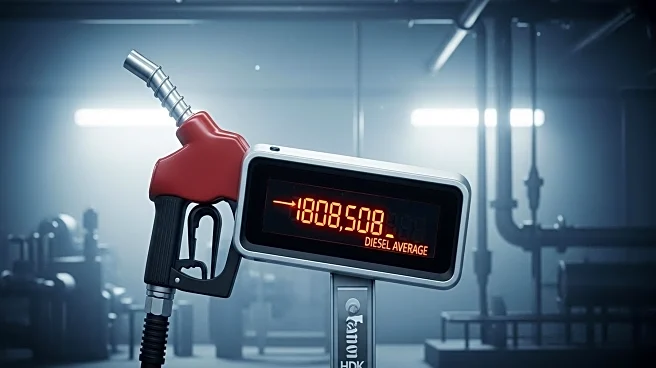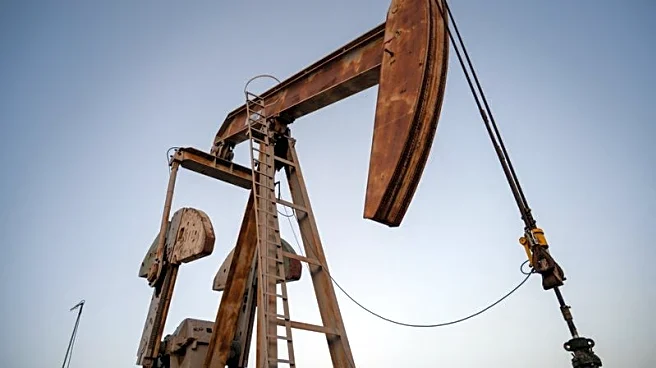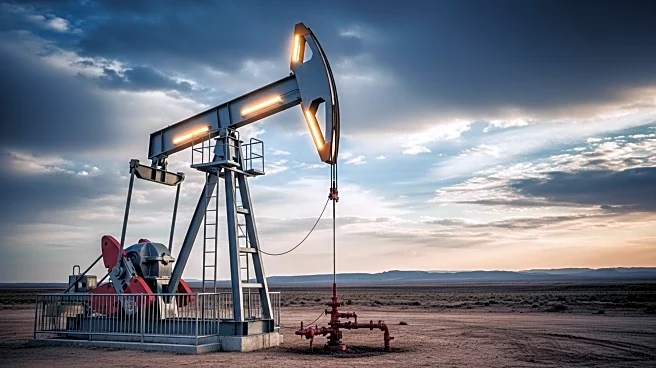What's Happening?
The Energy Information Administration (EIA) has reported a decrease in the national average price per gallon of diesel gasoline. For the week of October 6, the price fell by 4.3 cents to $3.711. This decline follows a series of fluctuations over the past weeks, including a slight increase of $0.005 to $3.754 for the week of September 29, and a $0.01 increase to $3.749 for the week of September 22. Prior to these increases, there was a 2.7-cent decline to $3.739 for the week of September 15. The price had reached its highest weekly average since July 28 at $3.805. The report also noted that on an annual basis, the national average has increased by 12.7 cents, which is lower than the 21-cent annual increase recorded the previous week.
Why It's Important?
The fluctuation in diesel prices is significant for various sectors, particularly transportation and logistics, which rely heavily on diesel fuel. A decrease in diesel prices can lead to reduced operational costs for trucking companies and logistics providers, potentially lowering shipping costs for goods across the country. This can have a ripple effect on consumer prices and inflation. Conversely, consistent increases in diesel prices can strain budgets and lead to higher costs for goods and services. The current decrease may provide temporary relief for these industries, but ongoing volatility in fuel prices remains a concern.
What's Next?
The future trajectory of diesel prices will depend on several factors, including global oil market trends, geopolitical events, and domestic energy policies. Stakeholders in the transportation and logistics sectors will be closely monitoring these developments to adjust their strategies accordingly. Additionally, any changes in crude oil prices, as indicated by the current trading price of WTI crude at $61.49, will likely influence diesel prices in the coming weeks.
Beyond the Headlines
The fluctuations in diesel prices also highlight the broader challenges faced by the energy sector, including the need for sustainable and stable energy solutions. As the U.S. continues to navigate energy transitions and environmental concerns, the role of alternative fuels and energy efficiency measures may become increasingly important in mitigating the impact of volatile fuel prices.











